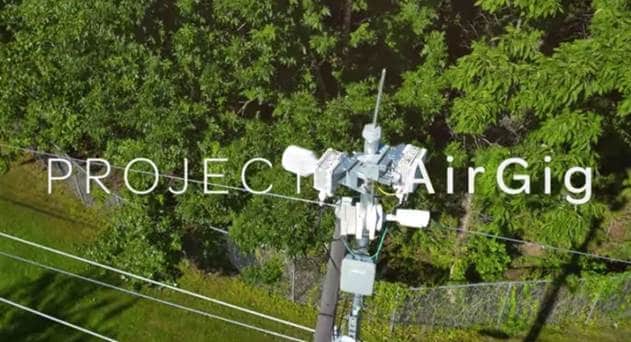AT&T, Tuesday unveiled Project AirGig, a new wireless technology from AT&T Labs with the potential of delivering multi-gigabit speeds in urban and rural areas using power lines. The Operator expects to kick off its first field trials in 2017.
This technology, also known as Gigabit WiFi will be easier to deploy than fiber, can run over license-free spectrum and can deliver ultra-fast wireless connectivity to any home or handheld wireless device, said AT&T.
The second largest mobile operator in the US claims that the technology is designed literally from the ground and is the result of 10 years of research and over 100 patent applications. Project AirGig delivers the last-mile access without any new fiber-to-the-home and it is flexible enough to be configured with small cells or distributed antenna systems, without need to build new towers and without need to bury new cables in the ground, said the Operator.
As part of Project AirGig, AT&T Labs invented low-cost plastic antennas and devices located along the power line to regenerate millimeter wave (mmWave) signals that can be used for 4G LTE and 5G multi-gigabit mobile and fixed deployments. These patent-pending devices can mean low hardware and deployment costs while maintaining the highest signal quality.
Project AirGig can also be a benefit to utility companies. It could enable and expand a variety of smart-grid applications. It could also allow for early detection of line integrity issues, such as encroaching tree branches. Power companies could use it to pinpoint specific locations, down to the line segment, where proactive maintenance could prevent problems. It could also support utility companies’ meter, appliance and usage control systems.
John Donovan, chief strategy officer and group president, Technology and Operations, AT&T
Project AirGig is still very much in the experimentation phase. That said, I’m excited about what AT&T Labs’ engineers have developed to date. Our overall access approach, in conjunction with our software-defined network architecture, is unmatched in its ability to usher in connected experiences like augmented reality, virtual reality, self-driving cars, telemedicine and 4K mobile video.
John Donovan, chief strategy officer and group president, Technology and Operations, AT&T
The results we’ve seen from our outdoor labs testing have been encouraging, especially as you think about where we’re heading in a 5G world. To that end, we’re looking at the right global location to trial this new technology next year.




















